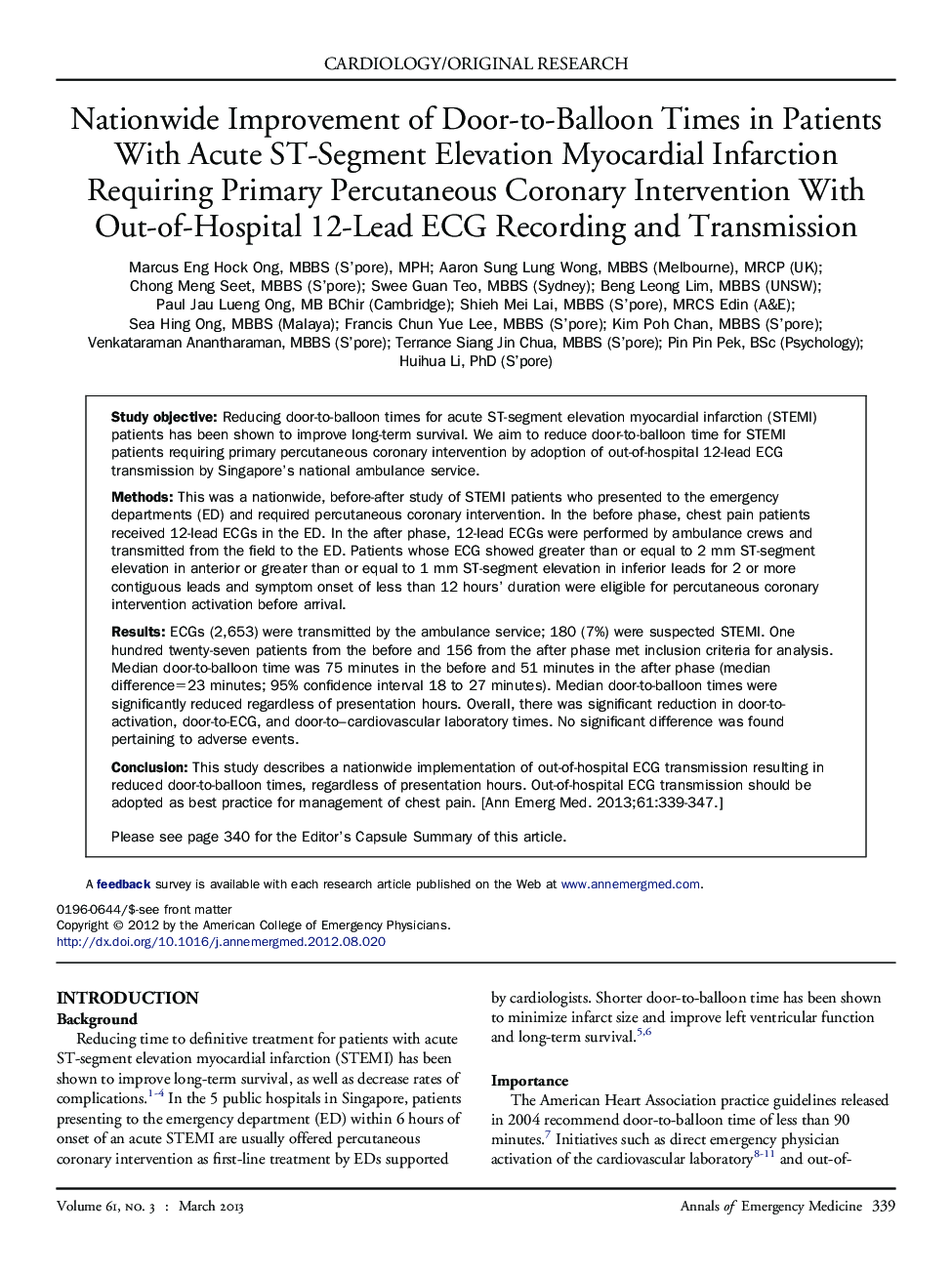| کد مقاله | کد نشریه | سال انتشار | مقاله انگلیسی | نسخه تمام متن |
|---|---|---|---|---|
| 3230469 | 1588548 | 2013 | 9 صفحه PDF | دانلود رایگان |

Study objectiveReducing door-to-balloon times for acute ST-segment elevation myocardial infarction (STEMI) patients has been shown to improve long-term survival. We aim to reduce door-to-balloon time for STEMI patients requiring primary percutaneous coronary intervention by adoption of out-of-hospital 12-lead ECG transmission by Singapore's national ambulance service.MethodsThis was a nationwide, before-after study of STEMI patients who presented to the emergency departments (ED) and required percutaneous coronary intervention. In the before phase, chest pain patients received 12-lead ECGs in the ED. In the after phase, 12-lead ECGs were performed by ambulance crews and transmitted from the field to the ED. Patients whose ECG showed greater than or equal to 2 mm ST-segment elevation in anterior or greater than or equal to 1 mm ST-segment elevation in inferior leads for 2 or more contiguous leads and symptom onset of less than 12 hours' duration were eligible for percutaneous coronary intervention activation before arrival.ResultsECGs (2,653) were transmitted by the ambulance service; 180 (7%) were suspected STEMI. One hundred twenty-seven patients from the before and 156 from the after phase met inclusion criteria for analysis. Median door-to-balloon time was 75 minutes in the before and 51 minutes in the after phase (median difference=23 minutes; 95% confidence interval 18 to 27 minutes). Median door-to-balloon times were significantly reduced regardless of presentation hours. Overall, there was significant reduction in door-to-activation, door-to-ECG, and door-to–cardiovascular laboratory times. No significant difference was found pertaining to adverse events.ConclusionThis study describes a nationwide implementation of out-of-hospital ECG transmission resulting in reduced door-to-balloon times, regardless of presentation hours. Out-of-hospital ECG transmission should be adopted as best practice for management of chest pain.
Journal: Annals of Emergency Medicine - Volume 61, Issue 3, March 2013, Pages 339–347